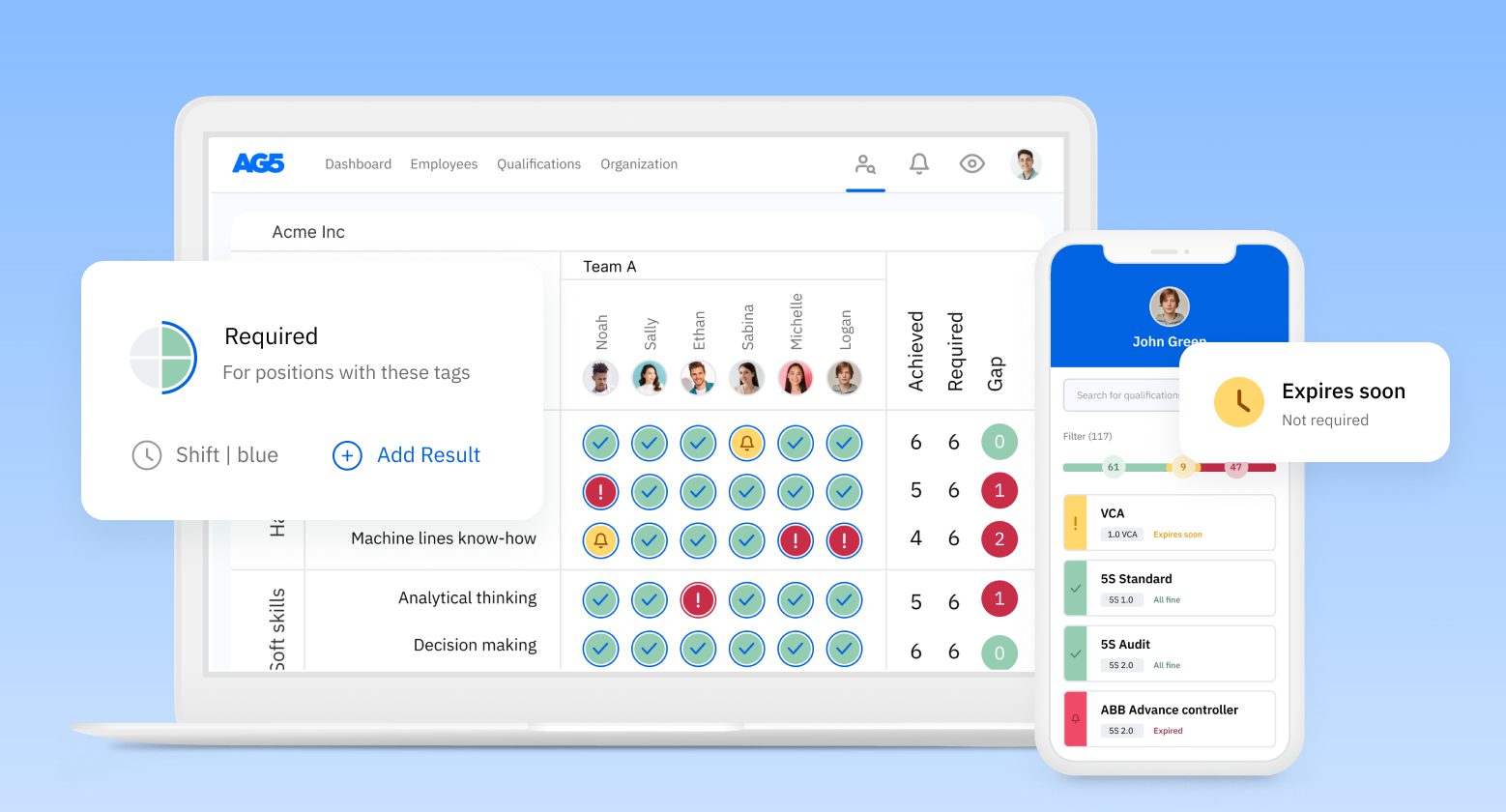How to design and conduct an effective skills audit
Companies that conduct skills audits are better able to identify skill gaps, leverage strengths, and develop targeted training programs to enhance overall performance. The idea of designing and conducting a skills audit, however, can be daunting, especially for those organizations going through the process for the first time. In this article, we will examine the purpose and benefits of a...


Companies that conduct skills audits are better able to identify skill gaps, leverage strengths, and develop targeted training programs to enhance overall performance. The idea of designing and conducting a skills audit, however, can be daunting, especially for those organizations going through the process for the first time.
In this article, we will examine the purpose and benefits of a skills audit, as well as offer insight into their design and implementation. You will emerge with a deeper understanding of skills audits –and the steps you must take to successfully conduct one.
What is a skills audit?Copied
A skills audit is a systematic assessment of the skills, knowledge, and abilities possessed by employees within an organization. Its primary purpose is to align the workforce’s capabilities with a business’s strategic objectives. By identifying areas of strength and improvement, organizations, you can better make informed decisions regarding training, recruitment, and career development.
What are the benefits of a skills audit?Copied
A skills audit brings with it a range of benefits, many of which come together to give your organization a competitive edge, foster a culture of continuous improvement, and position yourself for long-term success.
Below are several of the key benefits of conducting an effective skills audit.
Identifying skills gaps
A skills audit helps identify areas where employees lack essential skills or knowledge required to perform their roles effectively. By identifying these gaps, organizations can develop targeted training programs and allocate resources to bridge the deficiencies.
Strategic planning
By understanding the skills and competencies of their employees, organizations can strategically plan their workforce needs. They can identify potential succession candidates, plan for future skills requirements, and make informed decisions regarding recruitment, resource allocation, team composition, and project assignments.
Talent development
A skills audit helps organizations identify employees with high potential for growth and development. By mapping employees’ skills to career paths, organizations can create development plans, promote internal mobility, and support employees in reaching their full potential.
Succession planning
Understanding the skills and competencies of employees enables organizations to identify potential successors for key roles. By proactively grooming and preparing employees for higher positions, organizations can ensure a smooth transition during leadership changes and reduce the risk of talent gaps.
Increased employee engagement and retention
Conducting skills audits demonstrates an organization’s commitment to employee growth and development. By providing opportunities for skill enhancement, employees feel valued and engaged, leading to higher job satisfaction, increased loyalty, and reduced turnover rates.
How do you develop a skills audit process?Copied

Developing a structured and comprehensive skills audit process in which goals are clear, stakeholders are engaged, and competencies and skills are well-defined will lead to an effective and efficient skills audit that provides valuable insights regarding talent development and organizational success. In this section, we’ll take a look at crucial steps you must take in designing or developing your skills audit.
Identify goals
Clearly identify the goals and objectives of the skills audit. Determine the specific information you want to gather – and what outcomes you aim to achieve. Examples of goals may include identifying skill gaps, aligning skills with strategic objectives, or assessing training needs.
Identify key stakeholders
These stakeholders may include HR professionals, department managers, team leaders, and representatives from other relevant departments. You should engage these stakeholders to gain their input, support, and commitment throughout the skills audit process.
Determine scope and timeframe
To do so, specify the roles, departments, or teams that will be included in your skills audit. Consider the size and complexity of the organization when defining the scope. Set a realistic timeframe for the entire process, including data collection, analysis, and action plan development.
Establish a budget
Allocate the necessary resources and budget for conducting the skills audit. Consider costs related to data collection methods, analysis tools or software, training programs, and any external expertise required. Your budget should be sufficient to support the objectives and scope of your skills audit.
Define competencies and skills
Clearly define the competencies and skills that are relevant to your organization and its various roles. You should also identify the core competencies required for each position, and determine the specific skills and knowledge that employees should possess to perform their jobs effectively.
Develop a framework or model
The framework should outline the desired competencies and skills for each role within the organization. It will serve as a reference point for assessing and evaluating employee capabilities, as well as provides a standardized and consistent approach to identify skill gaps and measure proficiency levels.
Establish skill categories and levels
Categorize skills based on their relevance to specific roles or departments. Define proficiency levels, such as beginner, intermediate, and advanced, to gauge the extent of skills possessed by your employees.
How do you conduct a skills audit?Copied
Once you have designed your skills audit, you are ready to move forward to its implementation. By following these steps, you can effectively conduct a skills audit, gather meaningful data, identify skill gaps, and develop targeted strategies for skills development.
Communicate purpose and process
Employees should clearly understand the purpose, importance, and benefits of the skills audit. You should explain how their participation will contribute to their individual growth and the overall success of the organization. Additionally, be sure to provide clear instructions on how to participate, as well as address any concerns or questions.
Collect data
Implement your chosen data collection methods – such as surveys, questionnaires, interviews, or observations. Participants should be given sufficient time and access to resources needed to complete the data collection tasks. Here, confidentiality is key – so be sure to assure participants that their responses will be used for analysis and improvement purposes only.
Analyze and interpret data
Collect all the data and analyze it in a systematic and structured manner. This data should be organized based on relevant categories, such as skills, competencies, or job roles.
Identify skills gaps and areas of strength
Use appropriate analytical tools to identify trends, patterns, and skill gaps that will provide you with insight into the strengths and weaknesses of your workforce. Areas of strength and expertise can be leveraged for further development or knowledge sharing within the organization, helping you avoid overtraining and focus predominantly on areas in which there are skills gaps.
Develop an action plan
Based on the identified skill gaps, develop a comprehensive action plan that outlines specific strategies, initiatives, and timelines to address the gaps. Assign responsibilities to individuals or teams responsible for implementing the plan. Allocate resources, including budget and training opportunities, to support the execution of the action plan.
What should you do after conducting a skills audit?Copied
The data from your skills audit provides information that can drastically change the way your organization operates, resulting in streamlined processes that will keep your teams productive and engaged. Here, we’ll take a look at steps you can take after your skills audit is completed that can prepare you for a future of effective and efficient skills management.
- Implement your action plan. By providing necessary training and development opportunities to employees or developing recruitment initiatives to find employees with the skills you need. This will help you close skills gaps as quickly as possible.
- Evaluate and review your action plan. Continuously evaluate the effectiveness of the action plan and the impact of skill development initiatives. Collect feedback from employees and stakeholders to assess the outcomes and identify areas for improvement. You should also be sure to review the skills audit process itself to identify opportunities for refinement and enhancement in future audits.
- Support ongoing development. Skills audits should not be seen as isolated events but rather part of an ongoing process. This will help you foster a culture of continuous learning and development within the organization. Additionally, be sure to provide ongoing support and resources for employees to enhance their skills, whether through training programs, mentoring, coaching, or other developmental opportunities.

How does AG5 fit in to a skills audit?Copied
AG5’s skills management software replaces complicated Excel spreadsheets with an easy-to-use platform that contains all relevant information about your employees’ skills and competences, storing them centrally in a cloud‑based environment. This information can help you collect and analyze data for a skills audit, as well as quickly identify skills gaps – ensuring that your action plan is as targeted as possible.
Want to see AG5 in action? Schedule a free, live, 15-minute demo to see how AG5 can transform the way your organization approaches skills management.
